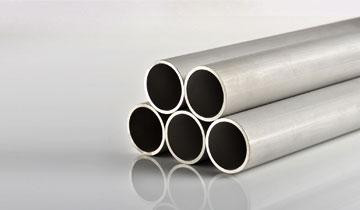A Stainless Steel Seamless Pipe heat exchanger is a device that absorbs heat energy from one body and lowers its temperature to release it from another body. Simply put, a tool designed to efficiently transfer or exchange heat from one body to another.
Let's look at an example of 200K and 400K water and steam. When both fluids pass, the water temperature rises from 200K to 270K. The steam temperature drops from 400K to 300K. This phenomenon of temperature drop and temperature rise depends on the volume of both fluids. The Stainless Steel Welded Pipe heats the incoming air.
There are several types of heat exchangers.
- Stainless Steel Tube heat exchanger.
- Plate heat exchanger.
- Plate and shell heat exchangers.
- Insulated wheel heat exchanger.
- Finned heat exchanger
- Pillow plate heat exchanger.
- Titanium Sheet heat exchanger.
- Waste heat recovery unit.
- Dynamic heat from the ground surface heat exchanger
- Phase change heat exchanger.
- Direct contact heat exchanger.
- Microchannel heat exchanger.
Stainless Steel Heat Exchanger Tube is used, and the various practices of everyday life visible are:
- heater
- Air conditioner
- refrigerator
- Car radiator.
- Air preheater/economizer for thermal power plants.
- Gas turbine regenerator.
- Petrochemical/refining industry.
- Beer and wine industry.
Types of heat exchangers
Flat plate heat exchanger:
They are made of compressed thin plates in a frame, with products and services circulating in separate channels. Ideal for applications where particles are absent, and fluid viscosity is relatively low. It is also a useful option when the product outlet temperature is close to the service inlet temperature.
You can improve performance by configuring the plate design, such as the corrugation angle of the replacement Stainless Steel Pipe Fittings. These are assembled in reverse configurations, creating two parallel channel systems, one for each liquid. The opposite directions of ripples in both fluids achieve a large number of support points, creating a network in each channel. This provides a high level of turbulence and, consequently, hotness. ..
Tubular and corrugated Heat Exchanger:
Tubular heat exchangers consist of one or more Stainless Steel Flanges tubes in a jacket. The product flows into the tubes, and the service fluid flows over the tubes (through the jacket). The use of corrugated tube technology improves heat transfer and efficiency compared to standard smooth Duplex Steel Pipe heat exchangers. Also, the potential for contamination is minimized, providing a more compact and economical heat exchanger.
Ground Surface Heat Exchanger:
It is used in applications where the heat transfer rate is reduced due to dirt or where the viscous fluid has a very low heat transfer rate.
Fouling occurs when the fluid degrades near the tube wall and a solid layer deposits on the tube wall. These Stainless Steel Sheet layers act as an insulator and prevent efficient heat transfer. Another form of fouling is crystallization, where cooling or increasing concentrations cause the constituents of the fluid to accumulate on the surface of the exchanger.
Generally, the higher the viscosity of a fluid, the slower the heat transfer rate. Therefore, a highly viscous fluid requires a very large transfer area. A surface-sharpened Titanium Tube heat exchanger mixes the fluids vigorously, increasing the amount of fluid in contact with the heat exchange surface. It also increases the heat transfer coefficient and reducing the surface area required.
